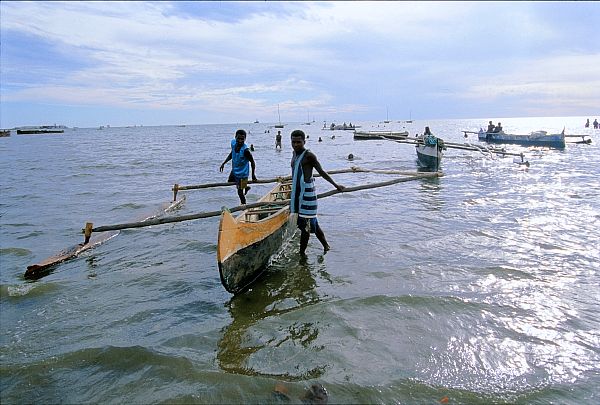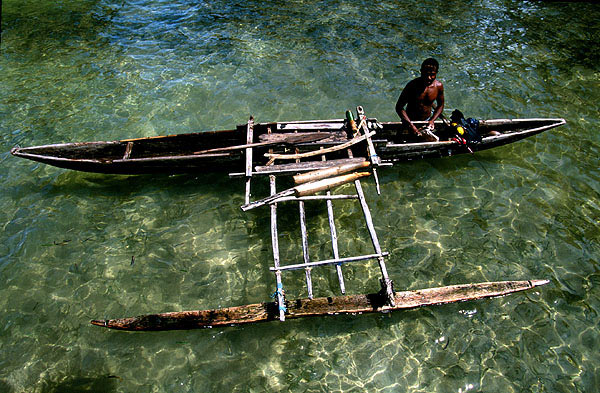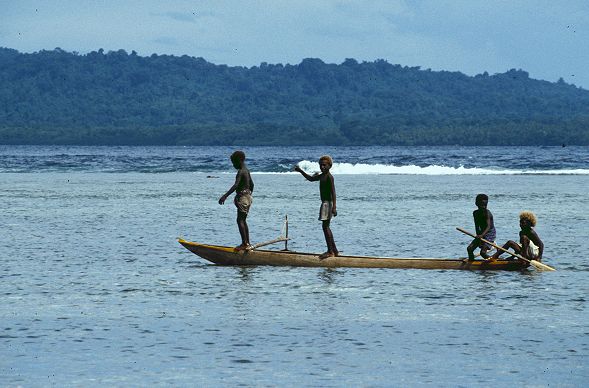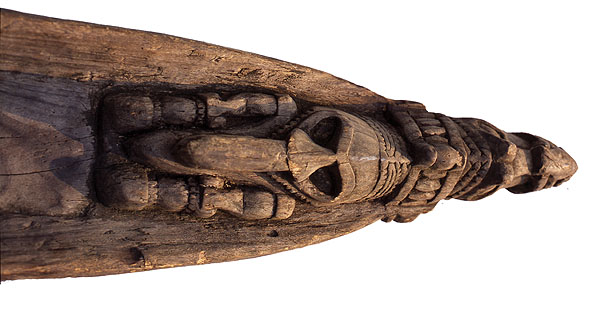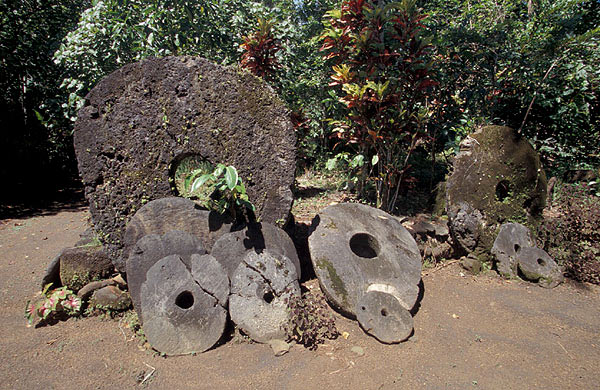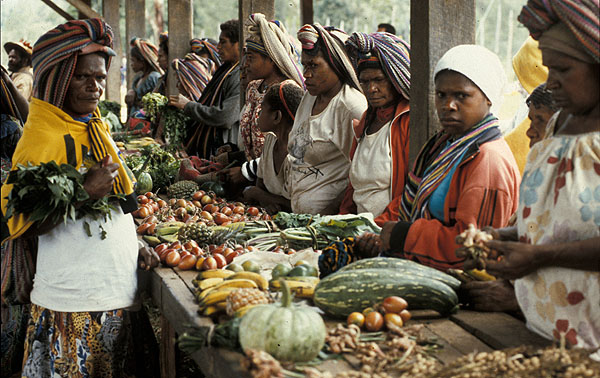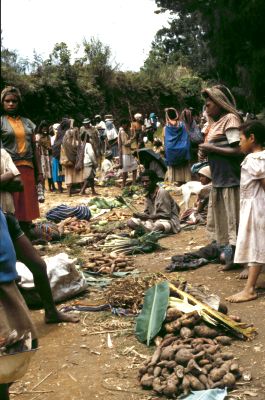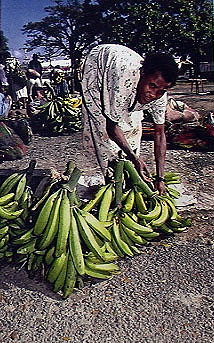The Ocean-2
The navigational techniques of Oceania are unrivalled. In addition, "outrigger" boats and boat building techniques were very specialized.
The outrigger boat counters the tendency for equipment to flip over the side. Usually a canoe was used to attach the outrigger and the main boat by way of a deck in between.
The main boat was a deep dugout, so that the entire combination was stable in the face of large waves. The deck in between carried goods for lengthy journeys, for example fire-making tools, food and animals (dogs, chickens etc.)
Tilting triangular or chelate-shaped sailboats allowed the Austronesians to sail East under backflow and headwind conditions.
The canoes of the Solomon Islands are of various sizes, and made from dugout logs. They can be small, like children's toys, or big enough to accommodate seven to eight adults. Floats were made from logs tightly held together.
The Marovo war boat is a kind of large canoe. It is about 11 to 13 meters long, and can seat up to 20 to 30 people. It is used as an attack boat during war.
Now, these war boats have become symbols of national pride, and the boat building techniques are important for restoring marine traditions.
The most important symbol is nguzunguzu's sculpture inlaid on the bow of the boat. The sculpture was used as a blessing for safe sailing and victory in battle. The eyes are wide open to ward off evil spirits.
The war boat has now become the national symbol of the Solomon Islands.
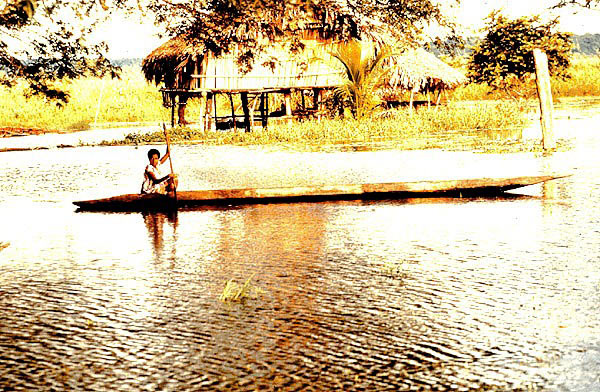
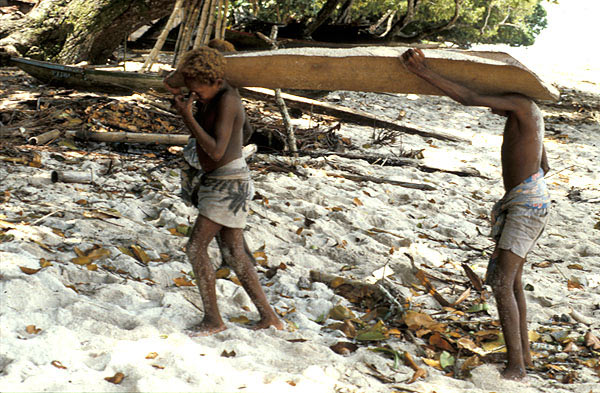
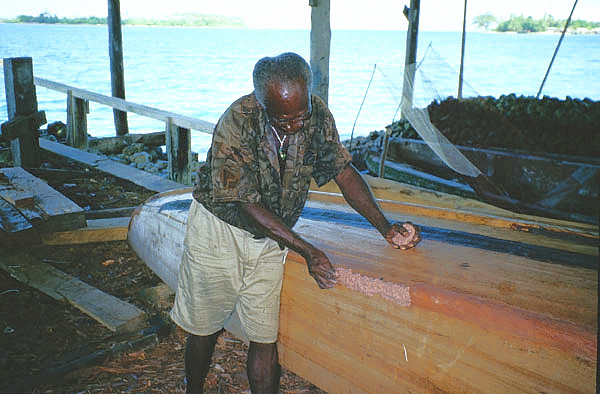
In Trobriand Island society, every large canoe has an owner who is either the chief or the head of the tribe. The owner is responsible for payments, hiring professionals, giving orders and work coordination. The professionals who make the ships are also engaged in carving and shamanism. In addition, there are people hired for physical labor.
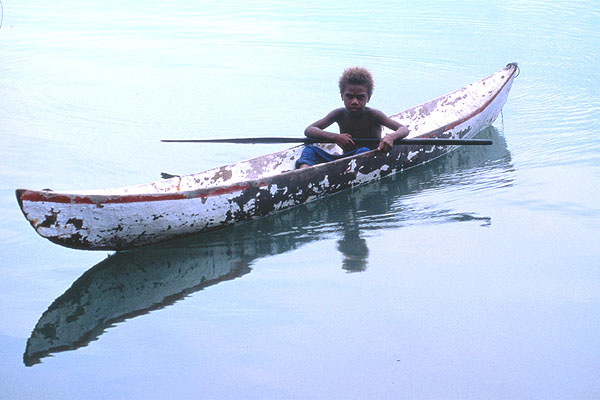
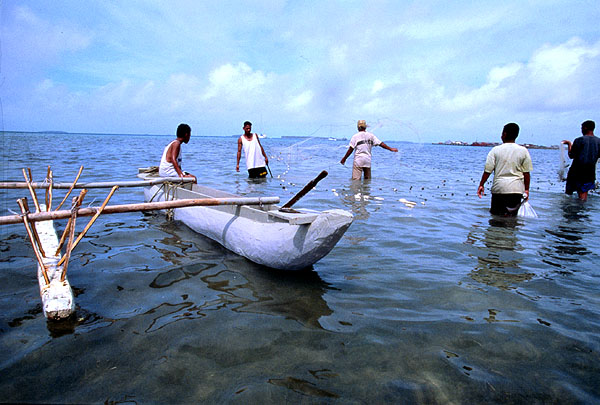
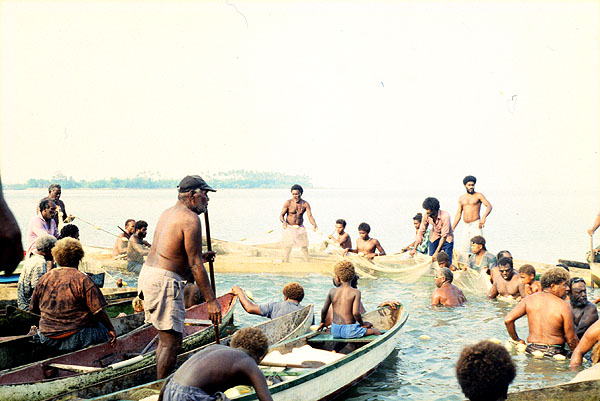
In many societies, at least two methods have been adopted for catching fish. Mollusks and slow moving fish can be caught using one's bare hands. In addition, there are several types of fishing nets including ones used by individuals, thrown, dragged or towed by canoes.
Fishing spears can be thrown by hand or shot like an arrow. They can be used in water, on shore or from a canoe.
In some areas, eels and sharks are caught with lassoes.
Traps vary. They can be a small basket or a large dam. They can be used with hooks and bait on land, shore or from a boat.
In Hawaii large fishponds are used to trap fish.
Even kites are used, or people act as bait to catch octopuses.
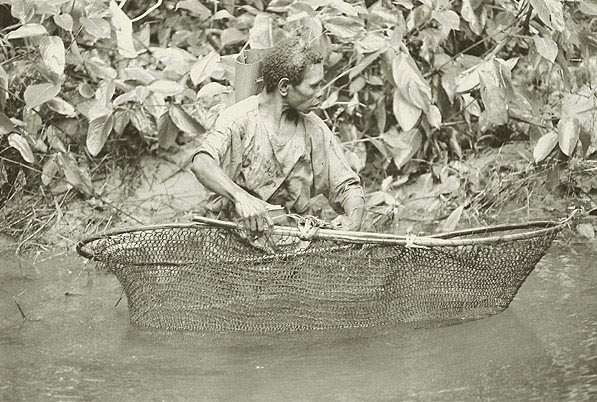
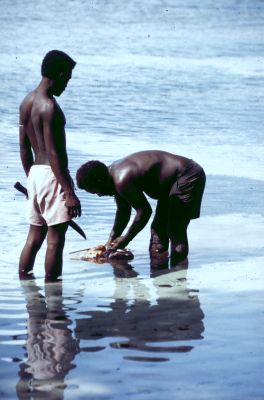
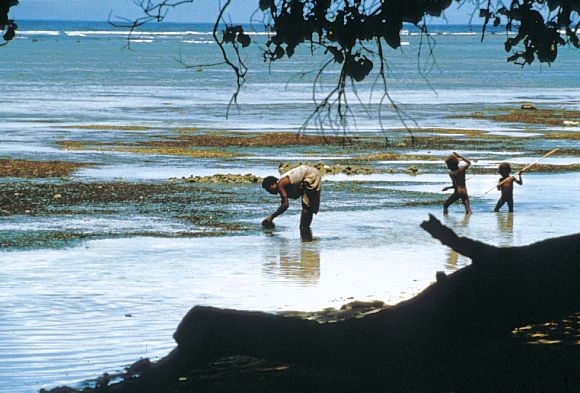
The people of Oceania rely on the sea and the land. The land is where they build homes and villages, where their lives are centered and food is produced.
A village's economics are based on three types of transaction: living, reputation and females and children. The operation of these three types of transaction is again divided into three levels of exchange, namely mutual benefit, redistribution and marketing.
Trading can be conducted on land or at sea. Kula Ring of the Trobriand Island is a well-known example.
The Kula Ring is located around the southeastern islands and islets of New Guinea. The peoples in this area use a diversity of raw materials and create a variety of handicrafts. They use large canoes as vehicles to carry out trade of goods among the islands.
The connections among the islands have become an extensive network for trade. What are mainly traded are items of no economic value such as armbands or necklaces made from shells. They constantly circulate the items, one by one, within the Kula Ring.
The activity of Kula appears to be a kind of seasonal ceremony on the surface, but in reality it promotes the economy of the Kula Ring. A person brings what he has to trade for what he needs, such as coconuts, fish, baskets, blankets and stones as well as other handicrafts, when he goes to another island.
The activity of Kula is not only a reciprocal exchange but also promotes the local economy and redistributes natural resources.
